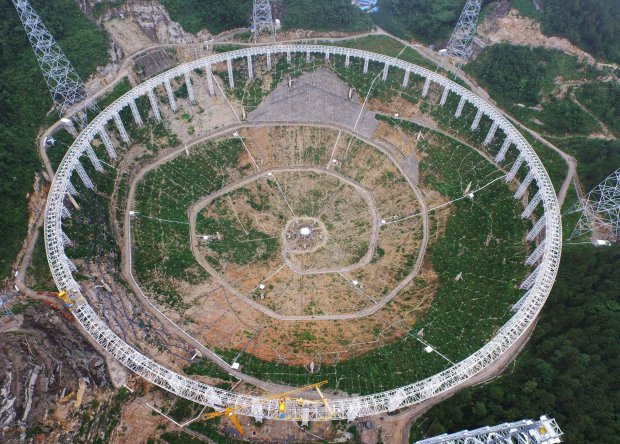World’s largest radio telescope starts looking for life on other planets


In this Saturday, Sept. 24, 2016 photo released by Xinhua News Agency, an aerial view shows the Five-hundred-meter Aperture Spherical Telescope (FAST) in the remote Pingtang county in southwest China’s Guizhou province. China has begun operating the world’s largest radio telescope to help search for extraterrestrial life. (Liu Xu/Xinhua via AP)
The world’s largest radio telescope has begun searching for signals from stars and galaxies and, perhaps, extraterrestrial life in a project demonstrating China’s rising ambitions in space and its pursuit of scientific prestige.Beijing has poured billions into such ambitious scientific projects as well as its military-backed space programme, including the launch of its second space station earlier this month.
Measuring 1,640ft in diameter, the radio telescope is nestled within a stunning landscape of lush green karst formations in southern Guizhou province. The facility took five years and around £140 million to complete, and surpasses the capability of the 985ft Arecibo Observatory in Puerto Rico, a dish used in research on stars which led to a Nobel Prize. China’s official Xinhua News Agency said hundreds of astronomers and enthusiasts watched the launch of the Five-hundred-metre Aperture Spherical Telescope, or FAST.
(FILES) This file photo taken on July 29, 2015 shows the five-hundred-metre Aperture Spherical Radio Telescope (FAST) under construction in Pingtang, southwestern China's Guizhou province. The world's largest radio telescope began operating in southwestern China on September 25, 2016, a project which Beijing says will help humanity search for alien life.

(FILES) This file photo taken on July 29, 2015 shows the five-hundred-metre Aperture Spherical Radio Telescope (FAST) under construction in Pingtang, southwestern China’s Guizhou province. The world’s largest radio telescope began operating in southwestern China on September 25, 2016, a project which Beijing says will help humanity search for alien life. / AFP PHOTO / STR / — China OUTSTR/AFP/Getty Images
Researchers said FAST would search for gravitational waves, detect radio emissions from stars and galaxies and listen for signs of intelligent extraterrestrial life.
‘The ultimate goal of FAST is to discover the laws of the development of the universe,’ said Qian Lei, an associate researcher with the National Astronomical Observatories of the Chinese Academy of Sciences.
Политика конфиденциальности | Правила пользования сайтом







